Trees are an invaluable part of a garden, so important that they are sometimes called its bones because they hold the other parts of the garden together. They are slow to grow and consequently are often the first thing planted in a new garden or one undergoing renovation.
Trees do more than hold a garden together, though. They are miracle workers, cleaning the air, providing protection against wind and rain, focusing our view and, in northern regions at least, providing splendid colour in the fall.
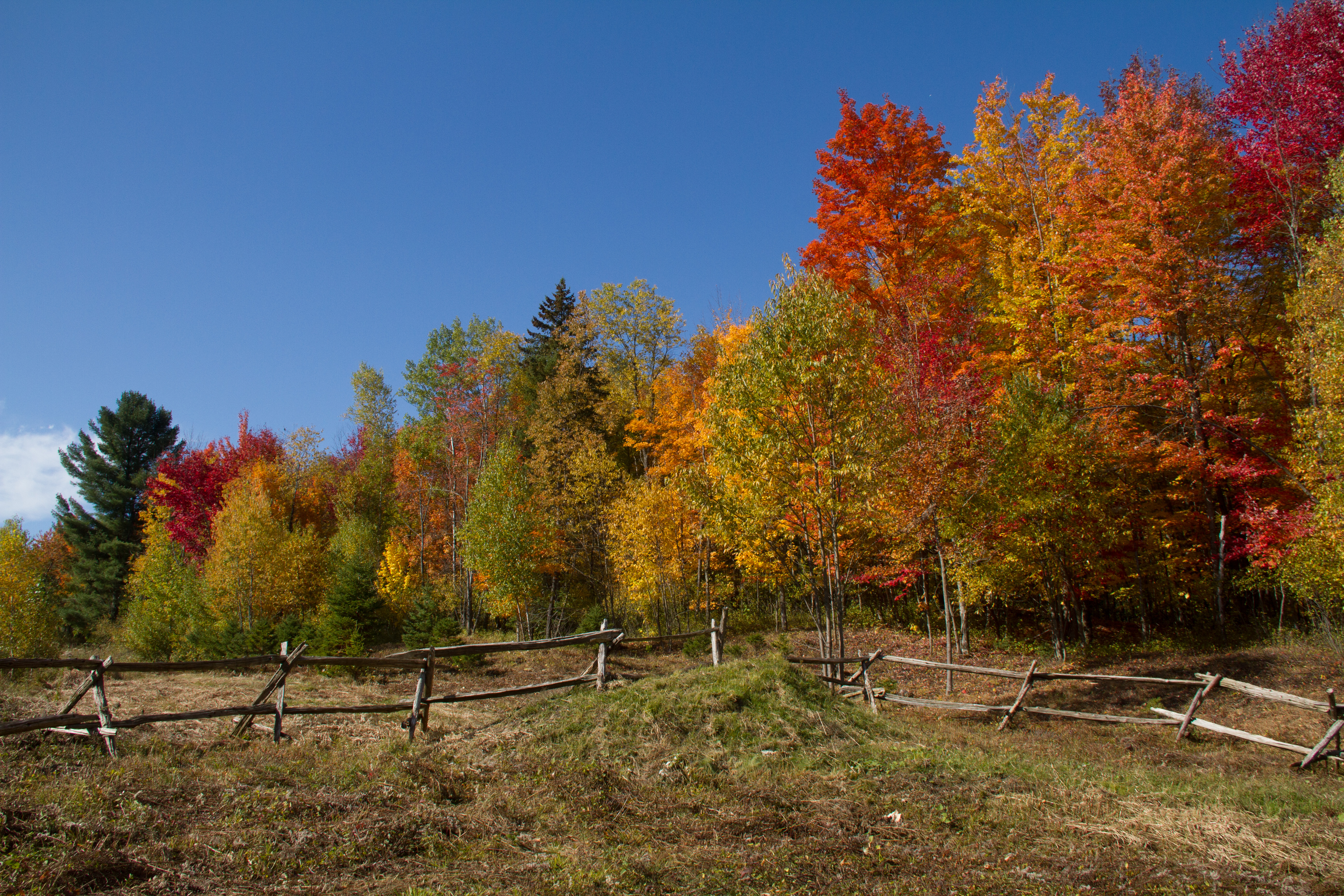
At Glen Villa, they add privacy to a picnic area, creating a sense of enclosure as well as adding beauty.
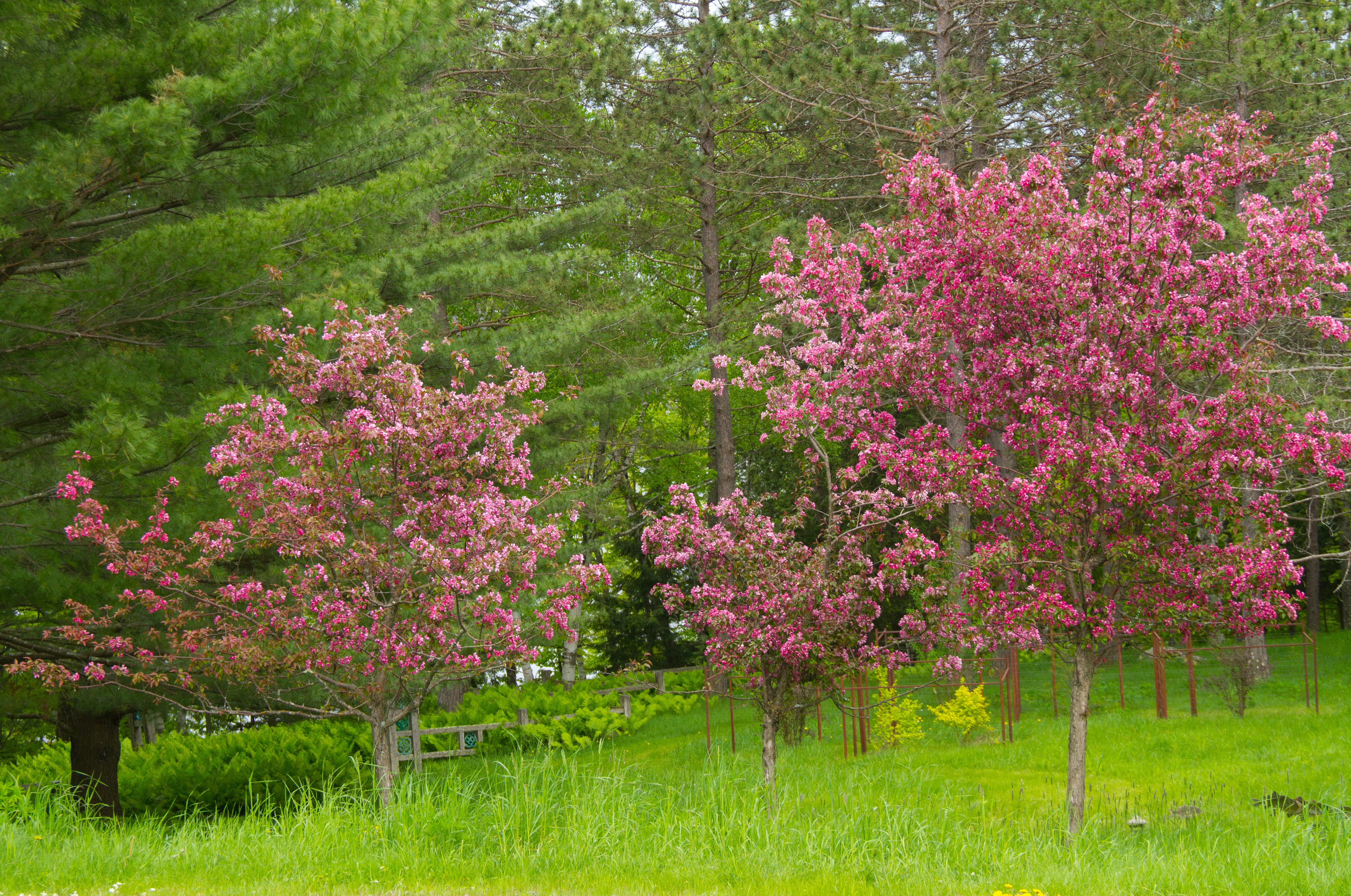
In winter, their black trunks offer a contrast to white ground and snow on their branches makes lines in mid air.
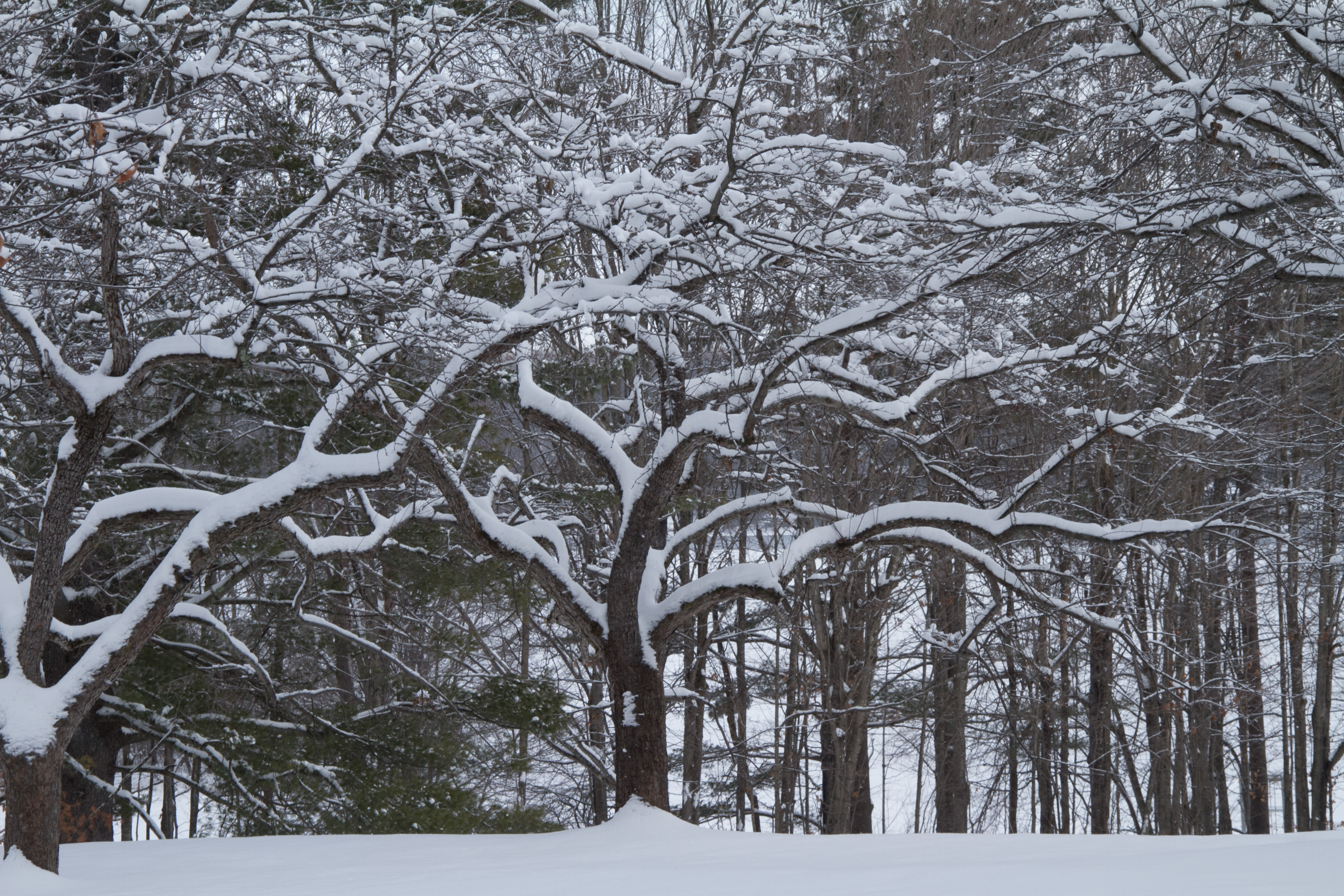
Trees can also shape emotional responses to our surroundings. In France, the road that leads to Chenonceau is lined with closely-planted trees, and their elegant regularity transforms an ordinary journey into a stately procession.

This photo is from a dozen or more years ago. I hope the trees still look as good.
In Italy, at the contemporary garden Il Bosco della Ragnaia, trees planted in lines create a different response. Instead of suggesting a stately procession, their lines marching across a field suggest order and discipline.
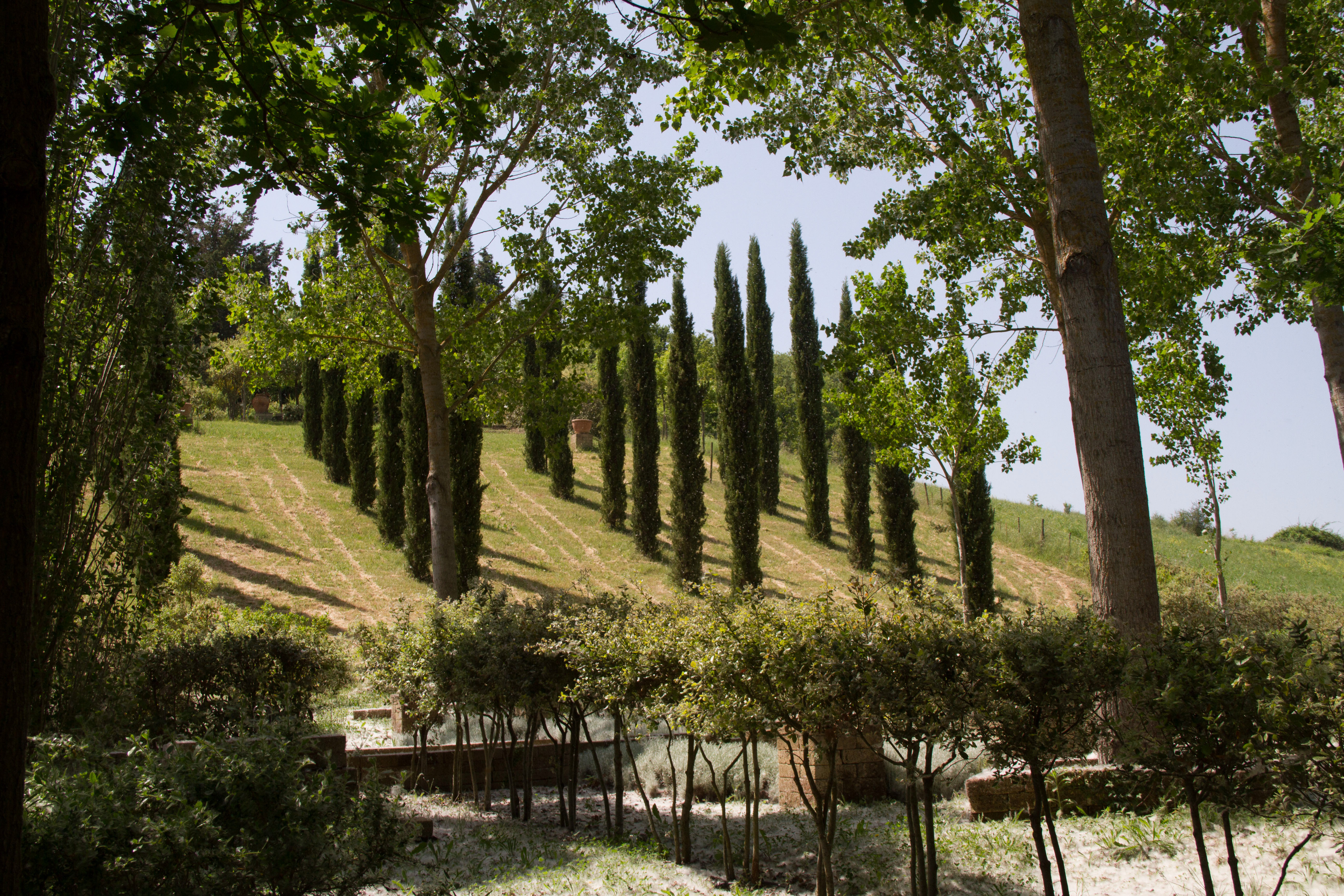
At the English garden Stourhead, Henry Hoare and his successors grouped trees to form patterns of light and shade, emulating the paintings he admired.
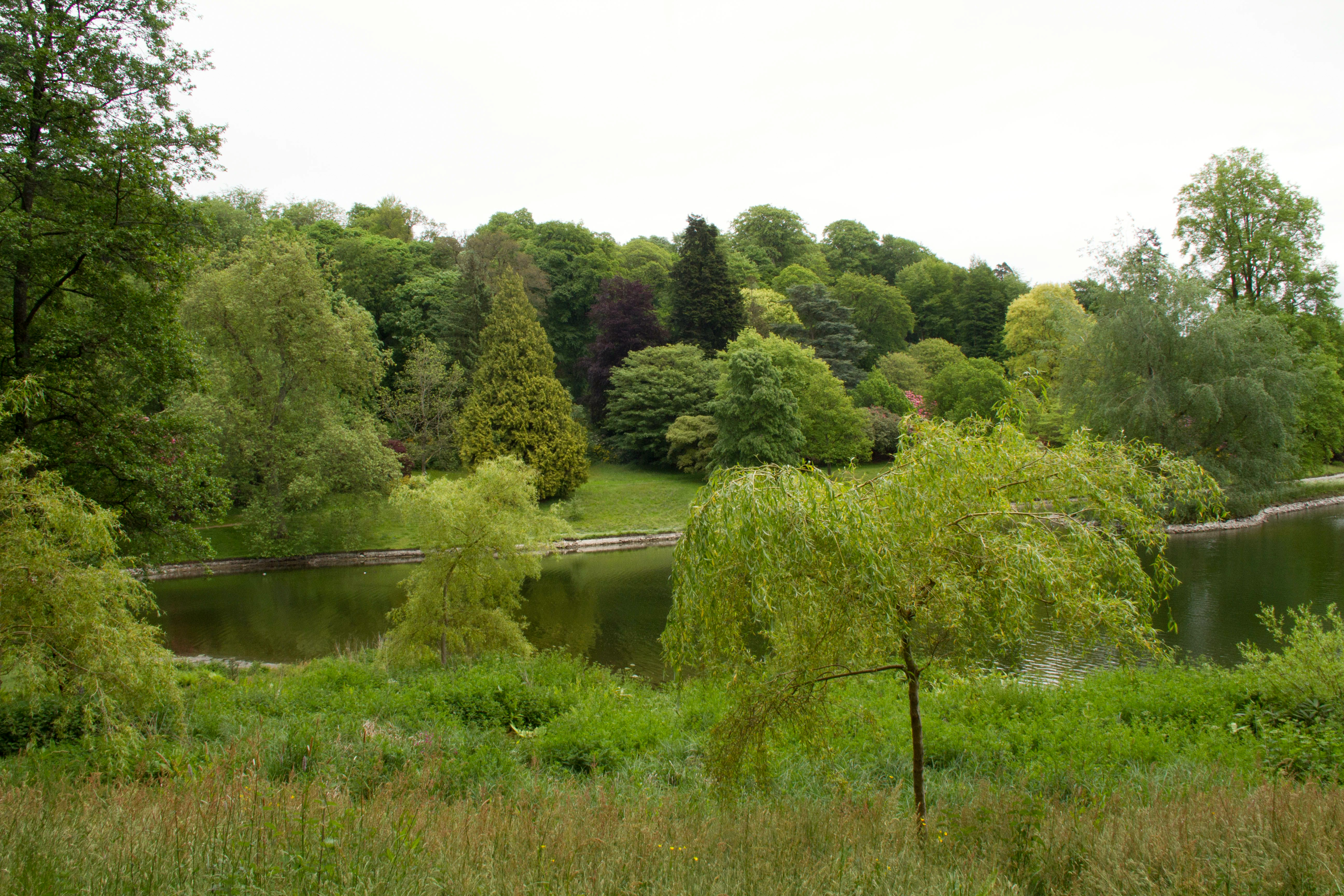
The planting continues, judging by the small willow in the foreground.
At Petworth in Sussex, Capability Brown placed single trees and groves to shape the view, sometimes in order to highlight attractive features, sometimes to hide unsightly ones — including whole villages from time to time.
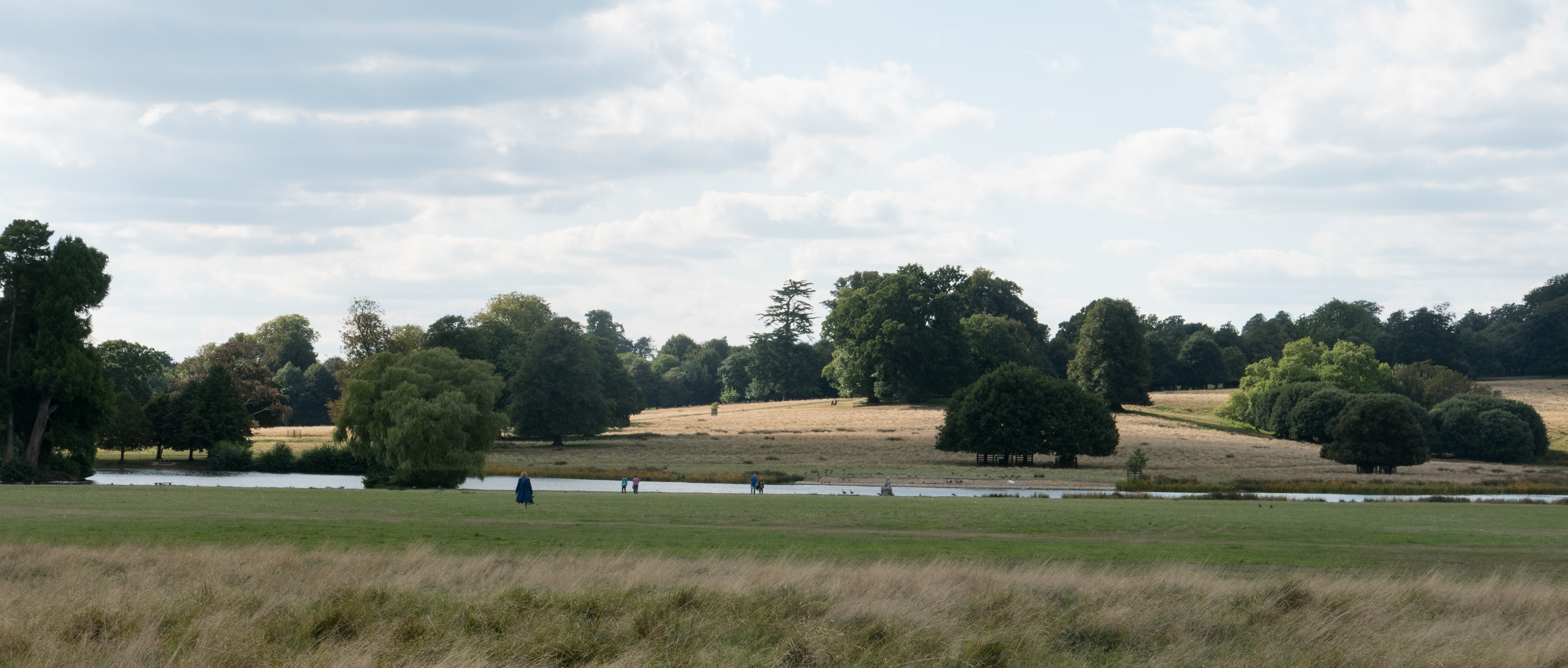
In addition to being useful and beautiful, trees can also play tricks on our eyes and our sense of perspective. A small tree planted in the distance looks farther away than it really is; a large tree on top of a hill makes the hill seem higher, and when a small plant is added in the foreground, the effect becomes even greater.
In Scotland, at Broadwoodside, a line of hornbeam trees (Carpinus betulus) seems to stretch out forever. The trees look as if they are evenly spaced but when I was there on a visit and walked along the path between the rows, I discovered that the journey was shorter than I’d thought: the distance between the trees changes as the path extends, and that change of spacing distorts what our eyes see and our brains register.
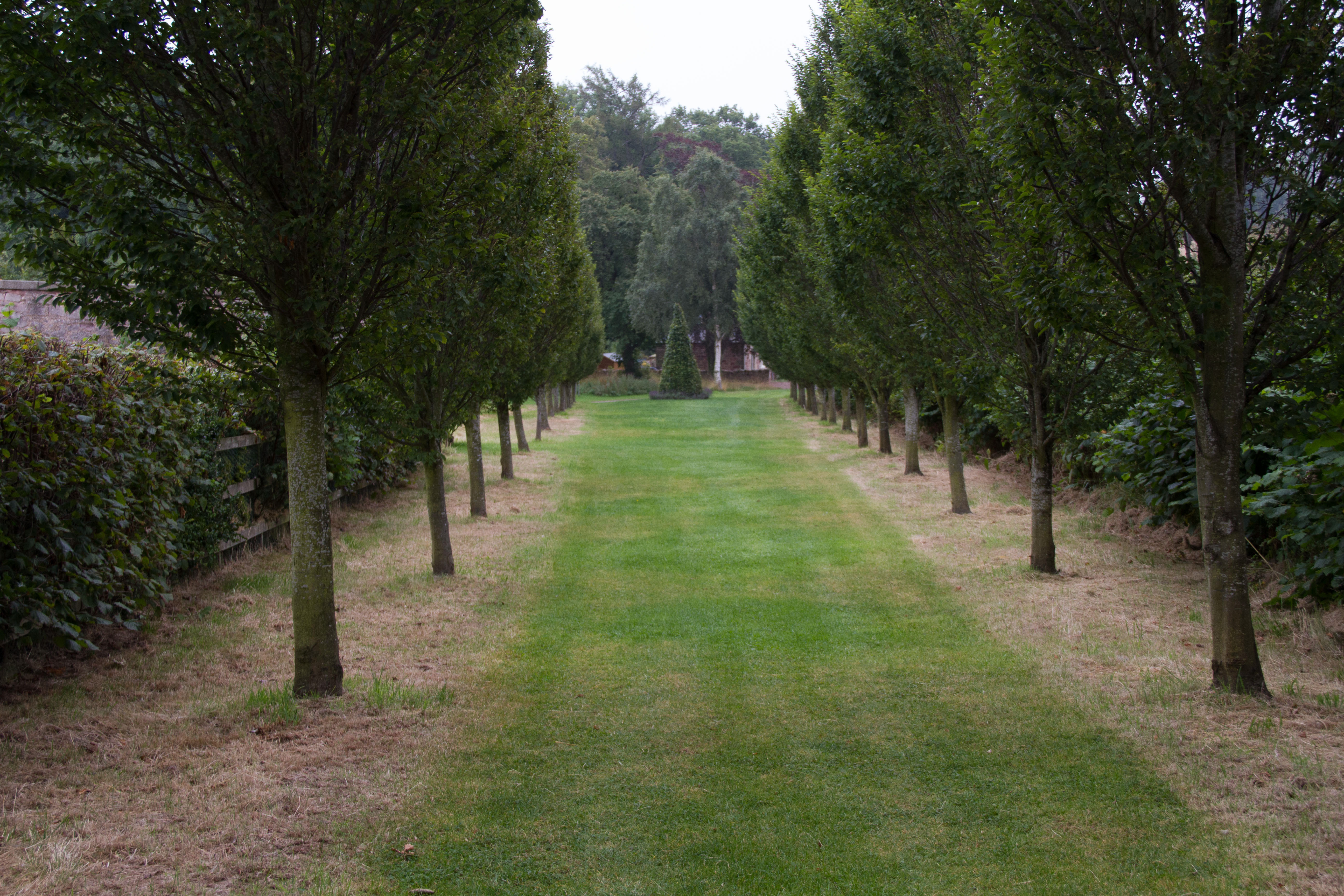
Looking out from the house towards the end of the allée, the spacing looks even.
I could cite many examples from large properties where trees affect our sense of reality but the same principles can be used in much smaller gardens. There may not be a high hill or a sweep of ground long enough for a tree to exaggerate the distance, but plants of different sizes can do the same job.
The boxwood balls below, which I saw in Le Jardin Plume in Normandy, are all the same size. But imagine how your eye would be tricked if they became smaller as they receded. The path would look longer, particularly if the straight hedges and triangular form at the end of the path were shorter too.
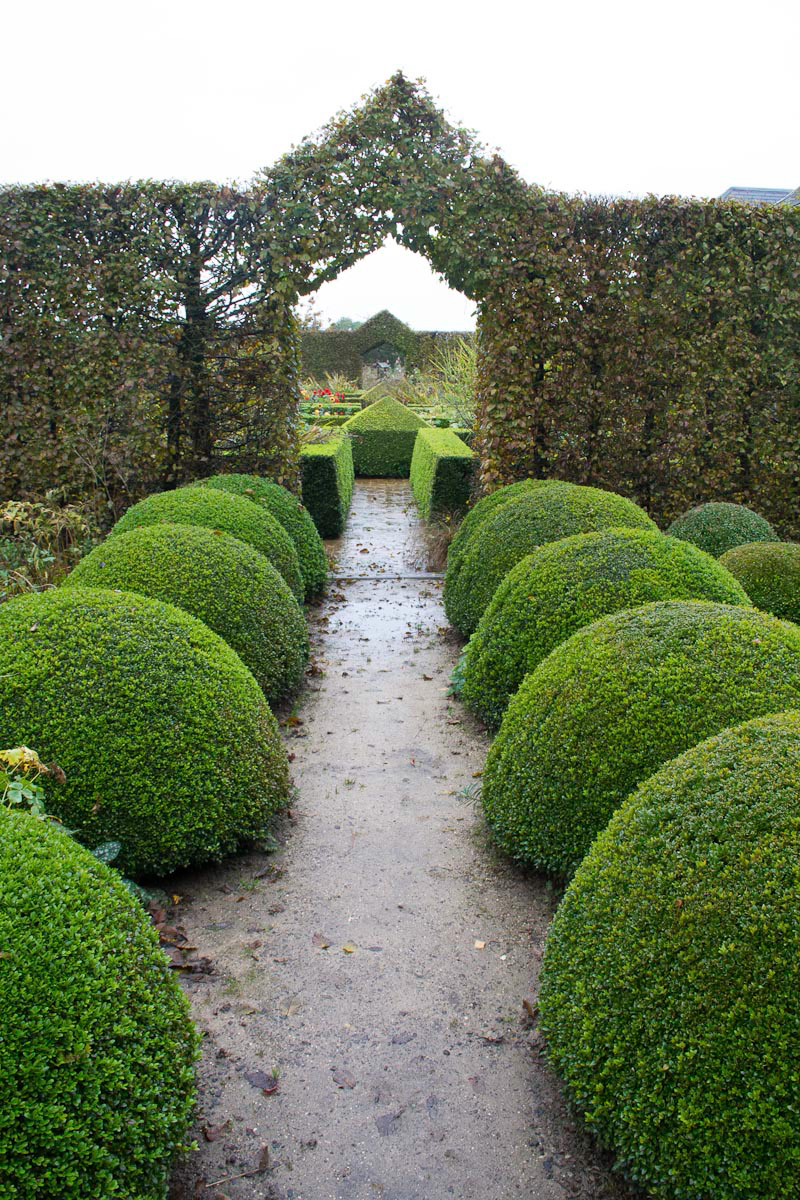
The bench we placed around the linden tree at Glen Villa provides a sense of scale, but we could distort that impression if we wanted to. The bench is now the right size for adults; if we made it the right height for small children, the tree trunk would look much longer and the tree itself appear more massive.
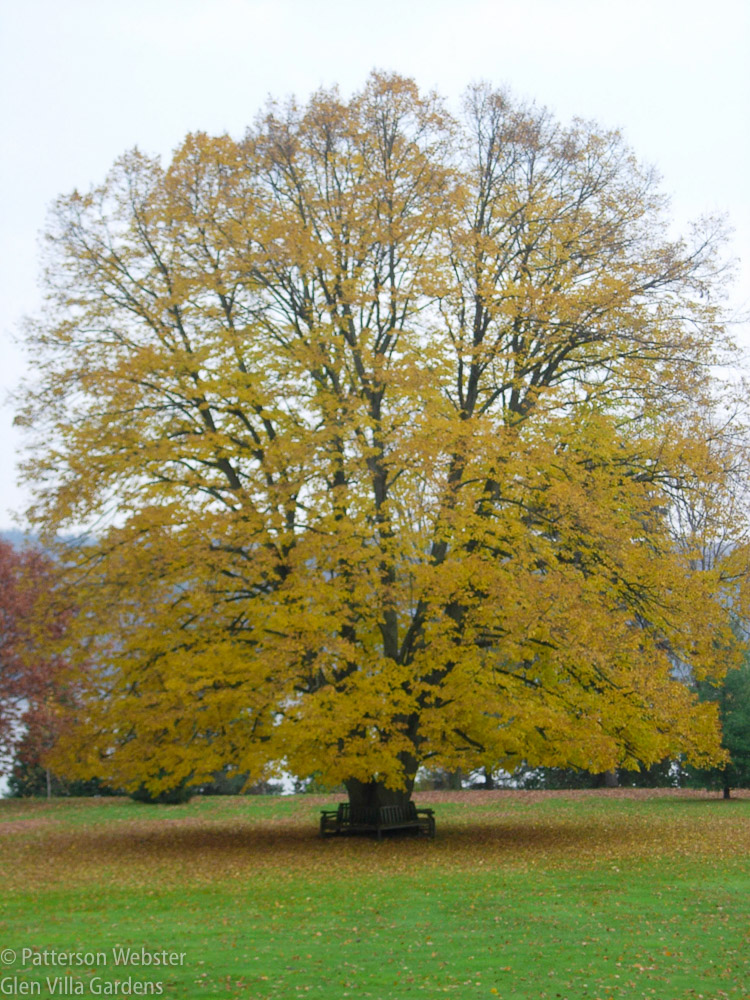
The effect of a lower bench would be greater if the photo was taken from farther away.
I played this trick on the eyes as part of Timelines, but there I reversed expectations: the Adirondack chair in the foreground is tiny while the one in the distance would fit a giant.
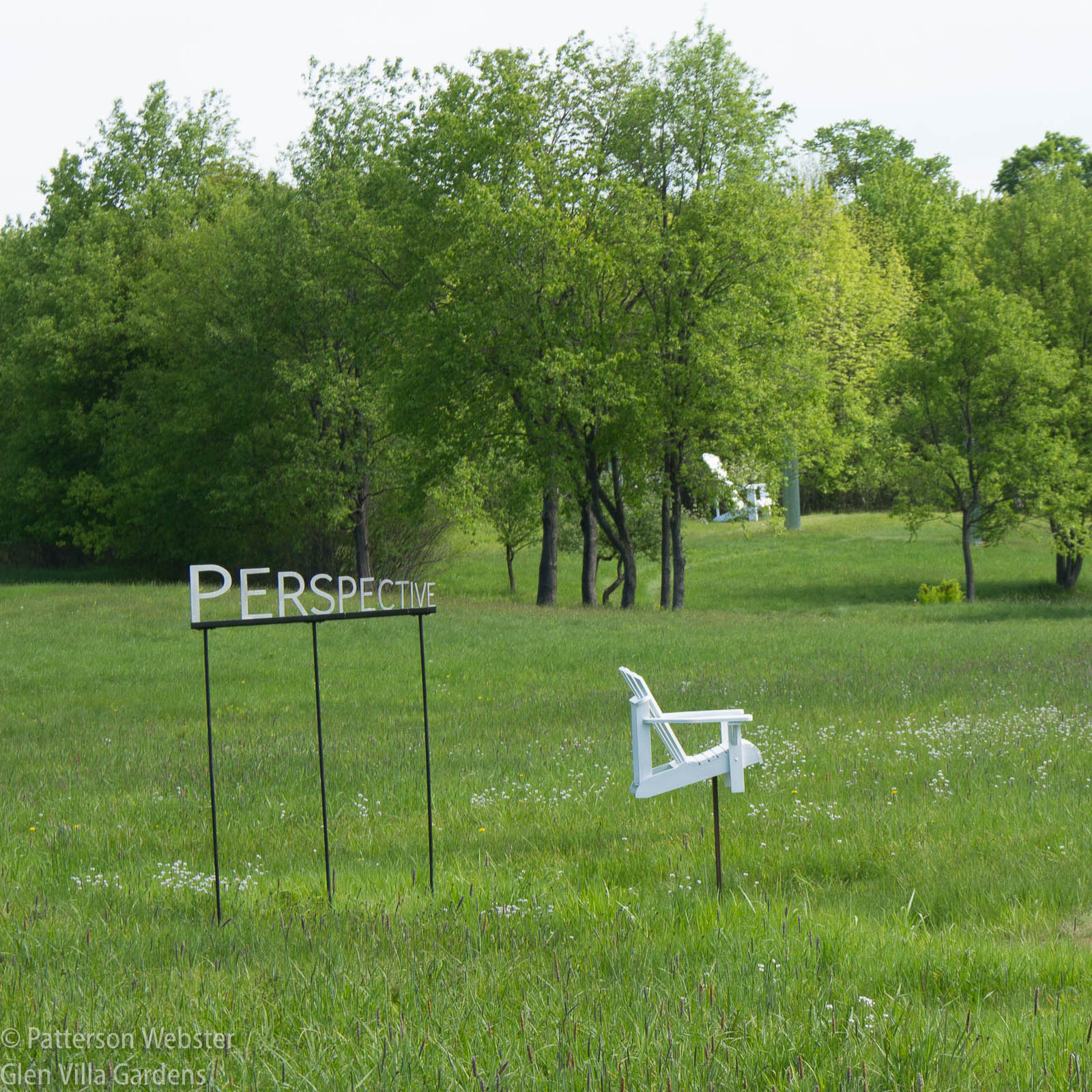
Trees often mark boundaries, whether the side of a road or the edge of a stream or the line between one garden and another. Less literally, they mark a boundary in time, between yesterday, when the tree began to grow, and today, when we see it, and tomorrow, when it is old and dying.
Looking back, I remember the maple tree that used to shade the house, and I see the sculpture that it has become. I think of the three words I chose to laser-cut into one the stainless steel rings: Seed • Shade • Shadow. They sum up the tree’s life story in a tidy fashion and I’m happy with the message they send. But at the same time I realize how inadequate words are when we try to sum up a life. They are never enough.

I designed this sculpture to honour the life of the tree and named it Tree Rings to indicate how it grew, more in some years than in others.
Instead of looking back, I choose to look forward. The sycamore trees I planted in the meadow at Glen Villa a dozen years ago have not yet developed their camouflage bark but I know that one day, they will. And that gives me hope.
Do you have a favourite tree? Is it in your garden or in a park or one you only see in your dreams?





